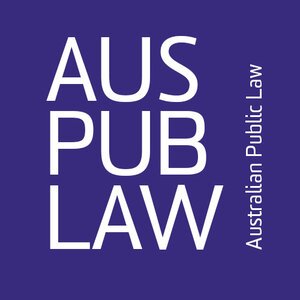
Index
- June 2025 1
- May 2025 2
- March 2025 2
- February 2025 2
- January 2025 1
- November 2024 5
- October 2024 2
- August 2024 3
- July 2024 2
- June 2024 4
- May 2024 1
- April 2024 5
- March 2024 5
- February 2024 4
- January 2024 2
- December 2023 5
- November 2023 7
- October 2023 4
- September 2023 5
- August 2023 3
- July 2023 5
- June 2023 3
- May 2023 5
- April 2023 3
- March 2023 5
- February 2023 9
- December 2022 9
- November 2022 3
- October 2022 7
- September 2022 4
- August 2022 8
- July 2022 3
- June 2022 4
- May 2022 9
- April 2022 7
- March 2022 2
- February 2022 5
- December 2021 7
- November 2021 12
- October 2021 9
- September 2021 14
- August 2021 9
- July 2021 5
- June 2021 9
- May 2021 4
- April 2021 3
- March 2021 13
- February 2021 7
- December 2020 1
- November 2020 4
- October 2020 4
- September 2020 5
- August 2020 5
- July 2020 8
- June 2020 5
- May 2020 11
- April 2020 6
- March 2020 5
- February 2020 3
- January 2020 1
- December 2019 1
- November 2019 3
- October 2019 2
- September 2019 2
- August 2019 4
- July 2019 2
- June 2019 2
- May 2019 5
- April 2019 8
- March 2019 2
- February 2019 3
- December 2018 1
- November 2018 9
- October 2018 2
- September 2018 5
- August 2018 3
- July 2018 3
- June 2018 2
- May 2018 5
- April 2018 7
- March 2018 3
- February 2018 4
- December 2017 3
- November 2017 7
- October 2017 4
- September 2017 3
- August 2017 3
- July 2017 1
- June 2017 3
- May 2017 2
- April 2017 3
- March 2017 4
- February 2017 3
- January 2017 1
- December 2016 3
- November 2016 4
- October 2016 2
- September 2016 1
- August 2016 3
- July 2016 1
- June 2016 3
- May 2016 3
- April 2016 4
- March 2016 4
- February 2016 3
- January 2016 1
- December 2015 2
- November 2015 4
- October 2015 4
- September 2015 4
- August 2015 3
- July 2015 6
- June 2015 6
The Factual Questions in Legitimacy Testing - Proportionality and Facts in Constitutional Adjudication book forum
Samuel Murray
Dr Anne Carter’s Proportionality and Facts in Constitutional Adjudication is a timely and welcome addition to the perpetually growing commentary concerning the advent of structured proportionality in the High Court’s jurisprudence of the implied freedom of political communication.
As Dr Carter notes throughout the book , a bare majority of the High Court in McCloy v New South Wales (2015) 257 CLR 178 dramatically changed the approach to testing proportionality in respect of the implied freedom by adopting a structured, multi-faceted approach to proportionality testing, effectively in lieu of the prior verbal formulation from Lange v Australian Broadcasting Corporation (1997) 189 CLR 520. given how extensively it changed the approach to the implied freedom. McCloy heralded a new wave of both academic commentary and case-law about the merits and application of the new formulation. This book does an excellent job at building out the former and offering guidance for the latter in respect of the use of facts in the new world of implied freedom proportionality testing.
Challenges for State Parties Engaged in Proportionality Litigation - Proportionality and Facts in Constitutional Adjudication book forum
Mike Wait
Dr Anne Carter’s new book, Proportionality and Facts in Constitutional Adjudication, makes a substantial and timely contribution to our understanding of a range of issues emerging in the burgeoning field of proportionality litigation. The focus of the book is on sources of evidence, burdens of proof and aspects of procedure. However, the book’s real strength is that it locates what are ultimately practical litigious issues within a sophisticated account of the evolution of the implied freedom of political communication in Australia and an appreciation of comparative approaches drawn from jurisdictions which have long wrestled with these issues.
The Art and (Social) Science of Proportionality and Facts in Constitutional Adjudication - Proportionality and Facts in Constitutional Adjudication book forum
Rosalind Dixon
Proportionality analysis is ultimately deeply fact dependent. It depends on an assessment of the suitability of laws for achieving their purposes – a question of basic logic and social fact. It further requires an assessment of whether a law is necessary, or could achieve its objective through some hypothetical, less restrictive alternative, and is 'adequate in the balance', namely achieves greater benefits than costs, from a constitutional perspective.
Anne Carter notes in her important new book that these are all arguably 'legislative' rather than 'adjudicative' facts, but also distinct in nature and scope. As the High Court has indicated, each calls for different sources of evidence, and procedures and rules governing their use. Yet to date, the constitutional law-fact nexus has attracted only limited attention in Australia. Carter’s book therefore makes an important contribution to the literature on this question. It provides a nuanced survey of the procedural challenges and complexities facing the High Court in this context, and offers tentative, well-reasoned potential solutions, informed by comparative experience.
Public Law Events Roundup December 2022
Welcome to the December edition of the AUSPUBLAW Australian Public Law Events Roundup.
Legislative complexity: what is it, how do we measure it, and why does it matter?
Lisa Burton Crawford, Elma Akand, Steefan Contractor and Scott Sisson
The ongoing inquiry of the Australian Law Reform Commission (ALRC) into Financial Services Legislation has cast new light on the complexity of legislation enacted by the Australian Parliament. This post aims to harness some of the ‘significant appetite and impetus for change’ that the ALRC identified with respect to federal financial services legislation for the broader phenomenon legislative complexity — which, we argue, has become systemic. This is demonstrated by data that we collected from the Federal Register of Legislation (FRL).
Confronting Race, Chapter III and Preventive (In)justice: Garlett v Western Australia
Tamara Tulich and Sarah Murray
On 7 September 2022, the High Court handed down its decision in Garlett v Western Australia [2022] HCA 30 (Garlett) upholding, by a 5:2 majority, the validity of item 34 of Sch 1 of Div 1 of the High Risk Serious Offenders Act 2020 (WA) (HRSO Act) on the basis that it did not infringe the principle established in Kable v Director of Public Prosecutions (NSW) [1996] HCA 24 (Kable). The constitutional reasoning of the High Court in Garlett follows the pattern of Vella v Commissioner of Police (NSW) [2019] HCA 38 (Vella) and Minister for Home Affairs v Benbrika [2021] HCA 4 (Benbrika) with Gageler J and Gordon J dissenting from the rest of the Court in relation to the constitutionality of the risk assessment role being conferred on ‘courts of a State’. However, the case also provides important new insights on Chapter III of the Commonwealth Constitution (Ch III) in that a minority of the Court identified a role for the principle established in Chu Kheng Lim v Minister for Immigration, Local Government and Ethnic Affairs [1992] 176 CLR 1 (Lim) beyond the federal court context to state courts and, relatedly, new strands of convergence in Ch III jurisprudence. .
Public Law Events Roundup November 2022
Welcome to the November edition of the AUSPUBLAW Australian Public Law Events Roundup.
SDCV v Director-General of Security: ‘Closed evidence' and ‘practical justice'
David Hume
In SDCV v Director-General of Security [2022] HCA 22, the High Court held, 4:3, that it was constitutionally-permissible for the Federal Court to have regard to 'closed' information, which was known to the Court and the Government’s lawyers, and was the subject of 'closed' submissions involving the judges and the Government’s lawyers but was not disclosed to SDCV or his lawyers. The key issue in the case was whether the statutory scheme established by the Administrative Appeals Tribunal Act 1975 (Cth) – which permitted the Federal Court to rely on closed information, while prohibiting it from being disclosed to SDCV – required or permitted the Federal Court to act in a procedurally unfair way.
In this post, I first address the factual and procedural background (which are interesting in and of themselves); secondly, I address some key aspects of the majority’s reasoning; and, thirdly, I make some observations on the reasoning and outcome.
Reforming Age Discrimination Law book forum: Alysia Blackham - Author’s reply
Alysia Blackham
It is an incredible privilege to have such an esteemed panel reflect on this book. Reforming Age Discrimination Law is, at its heart, a call to action. It maps the many ways in which individual enforcement of age discrimination law is struggling to achieve meaningful change. It puts forward a series of reforms to improve the individual enforcement model, strengthen positive equality duties, bolster the roles of statutory equality agencies, and enhance collective enforcement. This is an ambitious programme of reform, that requires action by governments, employers, unions, statutory agencies, legal practitioners, legal educators, courts, and judges. I argue, too, that these reforms work best together; they are mutually supportive and reinforcing, just as these forms of enforcement work best together.
Reforming Age Discrimination Law book forum: The Hon Anthony North KC - Two suggestions to enhance the enforcement of age discrimination law
The Hon Anthony North KC
Congratulations to Alysia Blackham on a very high-quality contribution to the learning in this area. I was particularly impressed by the logic and coherence in the development of the argument.
There are many issues raised in this book that capture my interest. I have chosen two, each of which reflects the different phases of my career, first as a judge, and then as a law reformer. Improvements here would make a significant difference to age discrimination law. The first concerns the reverse onus of proof, and the second concerns the enforcement of positive duties.
Reforming Age Discrimination Law book forum: Oanh Tran - Naming, Blaming but Not Claiming: Young Workers’ Experience of Age Discrimination
Oanh Tran
When we think about age discrimination, we think and talk about how it affects older people, but it equally affects young people. The law itself is discriminatory for young people. Alysia Blackham’s new book both explains the problems, and proffers solutions. Blackham's book considers the framework of ‘naming, blaming and claiming’ to explain how disputes emerge. In this post, I discuss some relevant examples where young workers name and blame, and discuss why they do not claim. I also comment on a few of Blackham’s suggested reforms.
Reforming Age Discrimination Law book forum: Andrew Byrnes
Andrew Byrnes
At the outset let me congratulate Associate Professor Blackham on the publication of what is a major contribution to the literature on discrimination law and age discrimination. There is, of course, a considerable body of literature examining the limitations of the legal frameworks that we have adopted in Australia and comparable jurisdictions to address different forms of discrimination. However, this book makes important and innovative contributions on the empirical, theoretical and policy levels: it should stimulate deep reflection and policy change.
Reforming Age Discrimination Law book forum: Rosalind Croucher
Rosalind Croucher
This post was prompted by remarks I made as part of a panel discussion to mark the publication of Associate Professor Alysia Blackham’s new book, Reforming Age Discrimination Law: Beyond Individual Enforcement, published this year by Oxford University Press in their prestigious Oxford Labour Law series.
First, I should say, that this is a fine book. Even before you get to page 1 you find a set of endorsements that would make any author blush. Phrases like ‘must read’ and ‘”go-to” resource’, ‘groundbreaking’, and ‘outstanding contribution’ leap off the page. This is in addition to the usual accolades you would expect for an academic book, like ‘meticulous research’, ‘scrupulous comparative doctrinal research with meticulous empirical case studies’, ‘sophisticated account’, ‘nuanced understanding’, ‘impressive socio-legal study’. It is, as Professor Colm O’Cinneide, acclaims, ‘a remarkably good book’.
Public Law Events Roundup October 2022
Welcome to the October edition of the AUSPUBLAW Australian Public Law Events Roundup.
Judicial agreements and disagreements in Alexander v Minister for Home Affairs
Sangeetha Pillai
Since 2015, Australia has had controversial citizenship-stripping laws as a part of its national security toolkit. These laws apply to dual citizens deemed to have repudiated their allegiance to Australia by virtue of their activities, and were first introduced in response to an increase in citizens travelling overseas to serve as ‘foreign fighters’ for organisations like Islamic State. In the recent decision of Alexander v Minister for Home Affairs [2022], the High Court found a provision of these laws, s 36B of the Australian Citizenship Act 2007, to be invalid in its entirety by a 6:1 majority (Steward J dissenting). For many, this was not an unexpected outcome: since the earliest days of Australia’s citizenship-stripping laws, multiple experts have warned that there was a likelihood that legislating for conduct-based denationalisation without conviction carried a serious risk of constitutional invalidity. This post unpacks key aspects of this decision. It focuses on the lines of agreement and disagreement amongst members of the Court with respect to the two issues that attracted the most consideration: whether s 36B infringed the separation of judicial power, and whether it fell within the scope of the naturalization and aliens power in s 51(xix) of the Constitution.
An onus of ‘almost nothing’: Nathanson v Minister for Home Affairs
Brandon Smith
The High Court has once again entered the fray on the concept of materiality in Nathanson v Minister for Home Affairs [2022] HCA 26 (Nathanson). This time, the Court clarified the evidentiary burden imposed on a judicial review applicant to show the realistic possibility of a different outcome where there is a denial of a fair opportunity to be heard. While the appeal was allowed 6:0 from the majority judgment of the Full Court of the Federal Court (Steward and Jackson JJ), the High Court has again divided on the question of onus for materiality. While this decision arises in the context of decision-making under the Migration Act 1958 (Cth), it may have broader ramifications for judicial review applications involving issues of procedural fairness.
High Court Upholds Validity of Surveillance Devices Legislation Against Freedom of Political Communication Challenge
Anthony Gray
The highly emotive subject of animal cruelty, and the legality of attempts to bring its possible existence to the attention of the public, was considered in a recent High Court decision. Anti-cruelty activists challenged the validity of a surveillance law that could be applied to their activities. The High Court dismissed the activists’ challenge, but in so doing, significant differences on key issues were apparent. The case also demonstrates that for a constitutional challenge to legislation based on the implied freedom of political communication, the requirements of proportionality, as applied by the current High Court, can present very high, if not virtually insurmountable, hurdles to overcome.
Public Law Events Roundup September 2022
Welcome to the September edition of the AUSPUBLAW Australian Public Law Events Roundup.
Data and Judicial Impartiality
Daniel Ghezelbash, Keyvan Dorostkar, Saul Wodak and Robert Ross
In the age of ‘big data’, governments and corporations are using data analytics to evaluate and improve programs and services across a wide range of areas. The courts have been relatively immune to this trend — but the tide may finally be turning.
The recent Australian Law Reform Commission (ALRC) Report on judicial impartiality includes ground-breaking findings and recommendations on how data can be used to promote judicial impartiality and public confidence in the legal system. The Report’s 14 recommendations draw on research from the fields of law and social science to formulate strategies to address these issues at an institutional level. A number of these recommendations focus on the role data can play in promoting transparency and judicial impartiality. This includes collecting data on court users’ subjective perceptions of procedural justice (recommendation 12) and collecting and reporting statistics regarding the diversity of the federal judiciary (recommendation 8).
Nothing to fear and much to be gained from a federal judicial commission
Gabrielle Appleby
The Australian Law Reform Commission’s (ALRC) recent Report on judicial impartiality and the law on bias, Without Fear or Favour, makes important connections between a number of much needed regulatory reforms and the foundational judicial value of impartiality. These include connecting impartiality to judicial appointments, and to the structure and reporting of the training and ongoing professional development of judges. The ALRC has also recommended that the government establish a federal judicial commission to create an alternative mechanism for raising allegations of bias. In the ALRC’s survey of lawyers this was ranked as the most important reform that could be achieved to maintain public confidence in judicial impartiality. The Attorney-General, Mark Dreyfus QC, has indicated that he supports such a proposal.

















